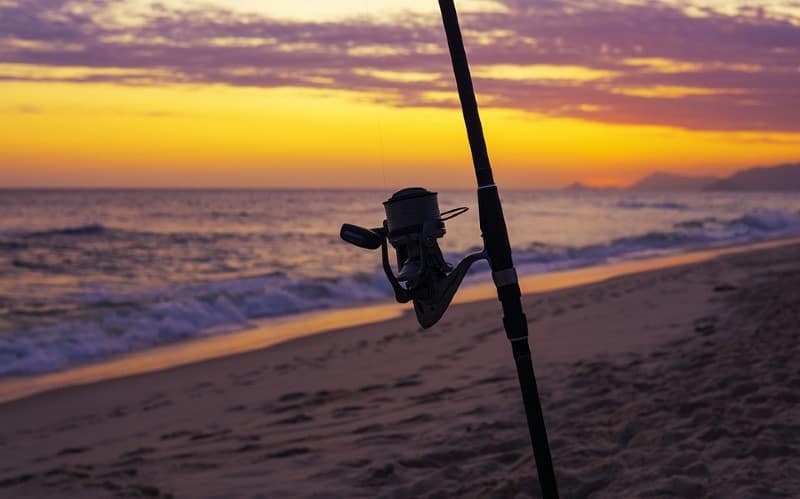Surf fishing, the art of casting into the breaking waves from the shore, offers a unique and rewarding angling experience. Whether you’re a novice or seasoned angler, mastering this technique requires careful consideration of various factors. Let’s explore the essentials to ensure your success on the sandy shores.
Understanding Surf Fishing: Surf fishing involves casting into the breaking surf while standing on the beach, pier, or rocks. It’s distinct from traditional saltwater fishing and demands specific gear, tactics, and knowledge of the environment.

Choosing Prime Spots: Selecting the right location and time is crucial for surf anglers. Incoming tides are generally ideal, with attention to sandbars and rip currents. Early mornings and evenings are recommended to avoid crowded beaches and enhance safety.
Surfcasting Techniques for Novices: Surfcasting, a fundamental skill for beginners, emphasizes accuracy and distance. Master the overhand cast, ensuring the right power and speed to land your bait effectively. Adjust tactics based on factors like fish species, tides, weather, and seasons.
Analyzing the Beach: Experienced surf anglers excel at reading the beach for optimal fishing spots. Sandbars, rip currents, and specific beach features indicate potential fish locations. Observing wave patterns and mapping the seabed during low tide enhances your fishing strategy.
Weather and Tides Matter: Perfect fishing conditions align with dusk and dawn during high tide. Overcast days can reduce shadows, making bait more enticing. However, safety always comes first, so stay vigilant for unforeseen foul weather.
Essential Surf Fishing Gear: Investing in the right equipment is vital for a successful surf fishing expedition. Consider a saltwater fishing rod (9-14 feet), rain gear, a pocket flashlight, knife, extra spool of line, tackle box, first aid kit, air pump, bait bucket, various baits and lures, cast net, pliers, tape measure, and a marine rig holder with hooks.

Surf Fishing Rods and Reels: Choose a long, quality surf fishing rod (12-15 feet) with extra-large rod guides for optimal casting. Complement it with a saltwater spinning reel (6,000-8,000 range) capable of holding at least 500 yards of line. A 20-50 lb braided fishing line is recommended.
Surf Fishing Prep Tips: Observe local practices, use PVC pipes or sand spikes as rod holders, and ensure your reel’s drag is appropriately set. Bolt cutters can be handy for tough situations, and quality gloves or a towel aid in handling large fish.
Surf Fishing Rigs, Tackle, and Bait: Choose the right rig based on your target species. Full-size red drum and sharks benefit from a large fish finder rig, while sea trout and Spanish mackerel are suited for basic rigs with shrimp and squid. Experiment with live bait like sand fleas and artificial lures for diverse results.
Freshwater Surf Fishing: Surf fishing isn’t exclusive to saltwater; freshwater surf fishing is possible in large bodies like the Great Lakes. Techniques remain similar, offering a unique angling experience beyond traditional freshwater methods.
Surf fishing is a dynamic and strategic form of angling that combines the thrill of the sea with the art of fishing. With the right gear, techniques, and understanding of the environment, you can turn your surf fishing dreams into a reality. Experience and practice will ultimately shape you into a proficient surf angler.
Images/Source: BoatSafe





